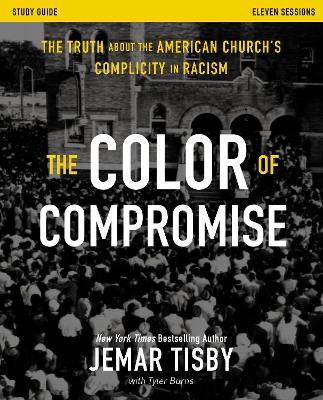
 Prior to the Civil War, Methodist, Baptist, and Presbyterian denominations split into Northern and Southern branches because of the issue of slavery. A large part of his motivation was the financial viability of his Bethesda Orphanage, which could be run more cheaply with slave than with paid labor. George Whitefield-the famous evangelist - urged the colony of Georgia, which had been founded as a free territory, to allow slavery. “Not only did white Christians fail to fight for black equality,” Tisby quotes historian Carolyn DuPont in summary, “they often labored mightily against it.” Did you know, for example, that… Tisby makes his case by means of a historical survey of people and events from the colonial era to the late-twentieth century. They chose comfort over constructive conflict and in so doing created and maintained a status quo of injustice.” “Historically speaking,” Tisby writes, “when faced with the choice between racism and equality, the American church has tended to practice a complicit Christianity rather than a courageous Christianity. Rather, the book is difficult to read because of its subject matter, namely, white Christian complicity with racism throughout American history. The difficulty does not result from a complex argument or dense prose, for the book’s argument is simply and straightforwardly made.
Prior to the Civil War, Methodist, Baptist, and Presbyterian denominations split into Northern and Southern branches because of the issue of slavery. A large part of his motivation was the financial viability of his Bethesda Orphanage, which could be run more cheaply with slave than with paid labor. George Whitefield-the famous evangelist - urged the colony of Georgia, which had been founded as a free territory, to allow slavery. “Not only did white Christians fail to fight for black equality,” Tisby quotes historian Carolyn DuPont in summary, “they often labored mightily against it.” Did you know, for example, that… Tisby makes his case by means of a historical survey of people and events from the colonial era to the late-twentieth century. They chose comfort over constructive conflict and in so doing created and maintained a status quo of injustice.” “Historically speaking,” Tisby writes, “when faced with the choice between racism and equality, the American church has tended to practice a complicit Christianity rather than a courageous Christianity. Rather, the book is difficult to read because of its subject matter, namely, white Christian complicity with racism throughout American history. The difficulty does not result from a complex argument or dense prose, for the book’s argument is simply and straightforwardly made. 
Jemar Tisby’s The Color of Compromise is a difficult book to read.








